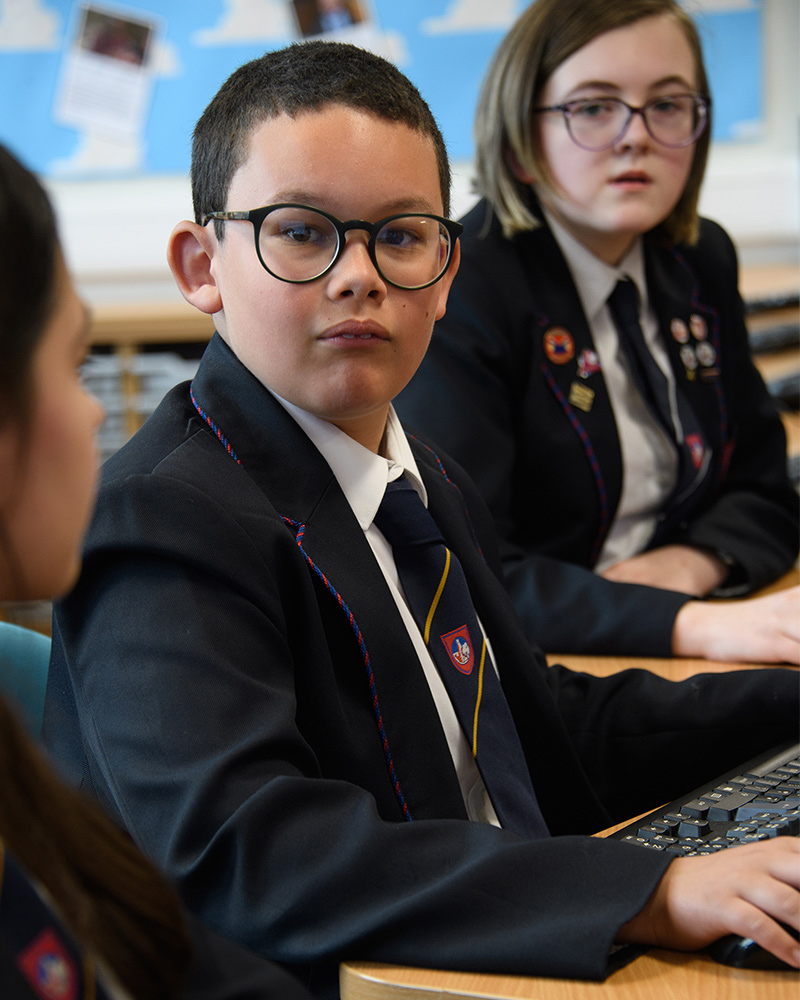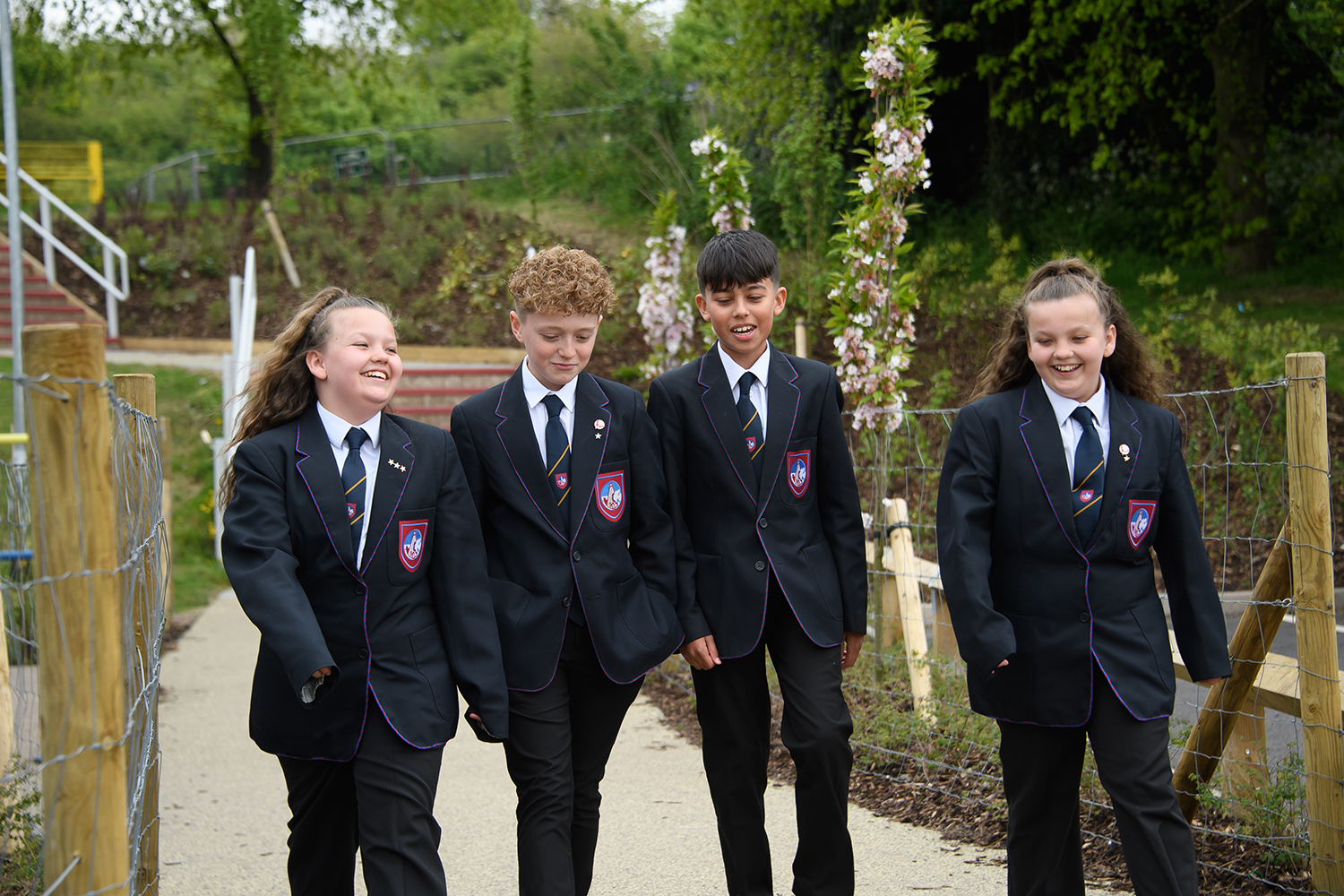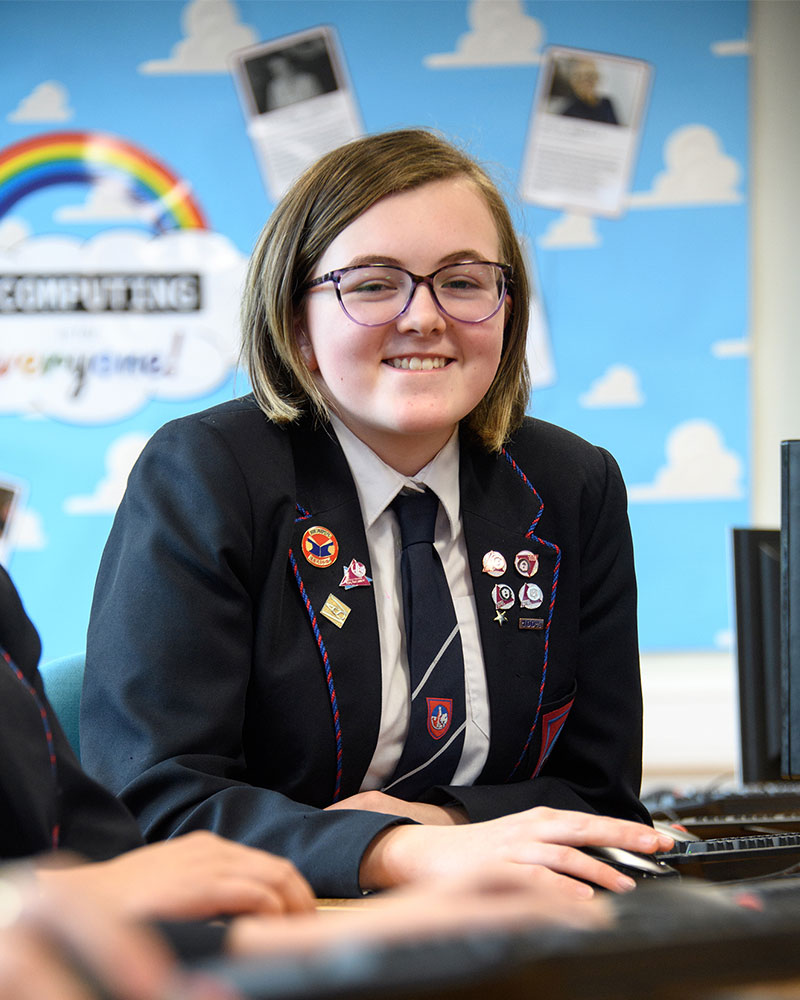Curriculum Model
Structure
The curriculum is split into two Key Stages: Key Stage 3 – Year 7 to Year 9 and Key Stage 4 – Year 10 and Year 11. There are 30 taught periods per week (six per day) with each period being 50 minutes in length.
Click here to view our Curriculum Grouping Page.
Key Stage 3
During Key Stage 3, pupils study a wide range of subjects with specialist subject teachers in purpose built accommodation and suites of rooms. This gives every pupil a broad and balanced foundation that builds on KS2 and from which to undertake public examination work or assessment in Key Stage 4. The subjects that form the Key Stage 3 curriculum are:
- Mathematics
- English
- Science
- History
- Geography
- RE
- Computing
- Design Technology
- Spanish
- Art
- PE
- Music
- Business Studies (Year 9 only)
- Relationship, Sex and Citizenship Education – RSCE
The number of lessons allocated to each subject across the 3 years at KS3 are detailed below.
Number of lessons
Subjects | Year 7 | Year 8 | Year 9 |
English | 4 | 4 | 4 |
Maths | 5 | 4 | 4 |
Science | 4 | 4 | 4 |
History | 1 | 1 | 2 |
Geography | 1 | 2 | 1 |
RE | 1 | 1 | 1 |
PE Core | 3 | 3 | 3 (2 for top set Spanish only) |
Art | 1 | 1 | 1 |
Music | 1 | 1 | 2 |
Business | 0 | 0 | 0.5 |
Spanish | 3 | 3 | 2 (3 top set only) |
Design Technology | 3 | 3 | 3 |
RSCE | 1 | 1 | 0.5 |
Computing | 1 | 1 | 1 |
Literacy | 1 | 1 | 1 |
| 30 | 30 | 30 |
In Year 7, pupils who are identified as having more complex SEND join a Key Skills ‘ nurture’ group that is predominately taught by specialist SEND teachers; the majority of lessons being taught in the same classroom. This is continued into Year 8. Other pupils’ needs are met as appropriate either with TA support or as part of adaptive practice led by teaching staff.


Key Stage 4
The Key Stage 4 curriculum consists of a ‘core’ curriculum and 3 option choices. The core curriculum consists of:
- English Language
- English literature
- Mathematics
- Science (Pupils wishing to study separate sciences must select this as one of their three option choices)
- Core PE
- RE/RSCE/Digital and Financial Literacy
Decisions at Key Stage 4 have foundations in the principle of informed choice and all decisions made are supported and always made in the best interests of pupils. Pupils have 3 ‘free’ option choices – one of which must be an EBacc subject, with all pupils studying for 8 GCSE qualifications; the number of options is reviewed annually supported by the rationale that pupils will achieve greater success by studying fewer options in more depth.
The vast majority of pupils follow courses which lead to GCSE qualifications. A very small number study vocational qualifications and only where the school deems they are appropriate. Pupils with identified SEND have specialist pathways provided that are appropriate for their needs and aspirations; these are discussed on an individual pupil basis with the SENCo, pupil and parent/guardian. Where necessary, TAs support pupils in lessons and teaching staff appropriately differentiate lessons to address the needs of all pupils.
Number of lessons
Subjects | Year 10 | Year 11 |
English – Literature and Language | 5 | 5 |
Maths | 5 | 5 |
Science | 5 | 5 |
Option 1 | 4 | 4 |
Option 2 | 4 | 4 |
Option 3 | 4 | 4 |
PE Core | 2 | 2 |
RE/RSCE/Digital and Financial Literacy | 1 | 1 |
TOTAL | 30 | 30 |
Option subjects for September 2023 include:
(All GCSEs unless stated otherwise)
- Animal Care (BTEC)
- Art and Design (3D Design)
- Art and Design (Fine Art)
- Art and Design (Textiles)
- Business
- Children’s Play, Learning and Development (BTEC)
- Computer Science
- COPE (Certificate of Professional Effectiveness) (BTEC)
- Design Technology
- Drama
- Food Preparation and Nutrition
- Geography
- History
- Music
- Physical Education (Full GCSE and/or BTEC)
- Religious Education (Full GCSE)
- Science (Separate sciences)
- Spanish
The number of lessons allocated to each subject across the 2 years at KS4 are detailed below.


